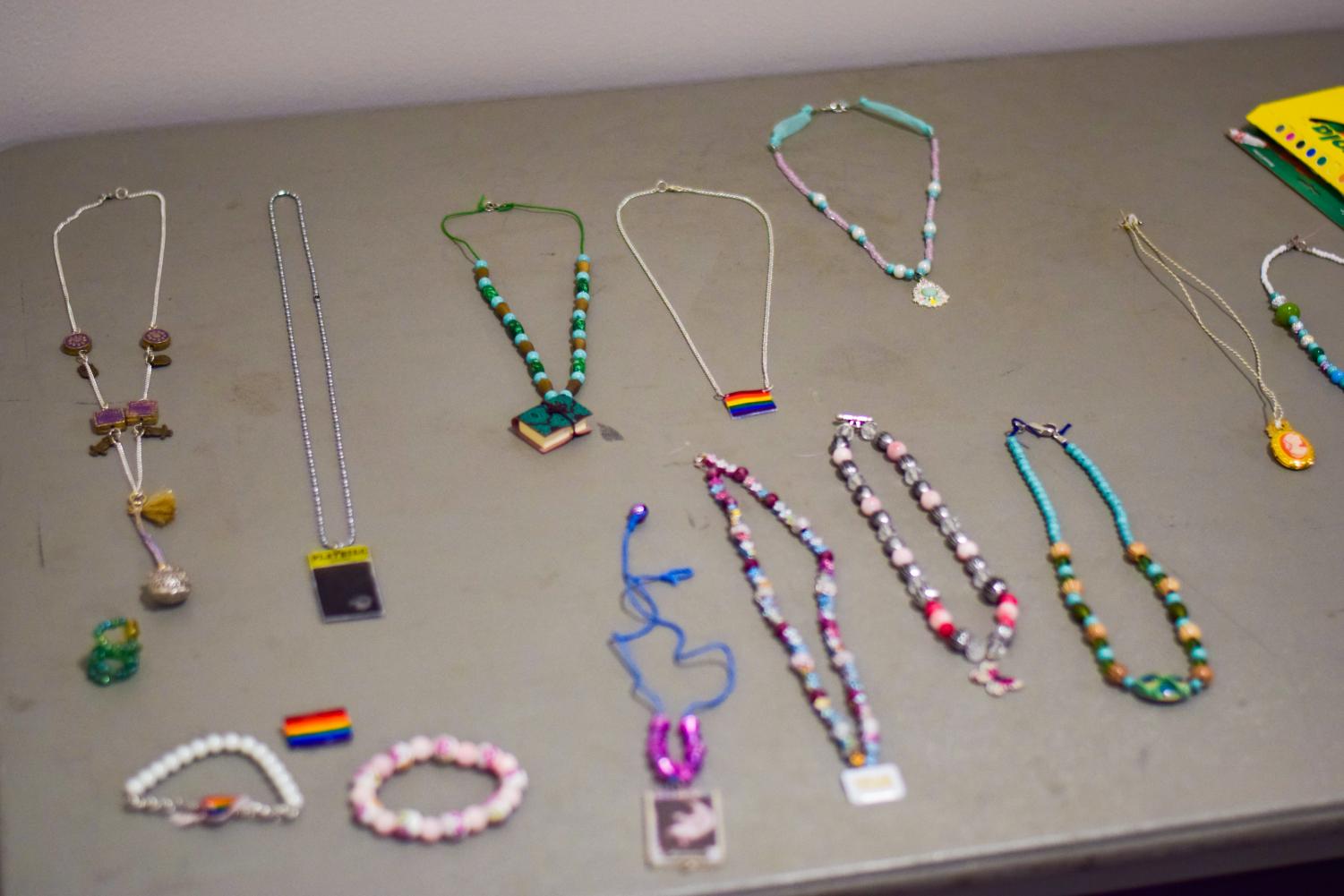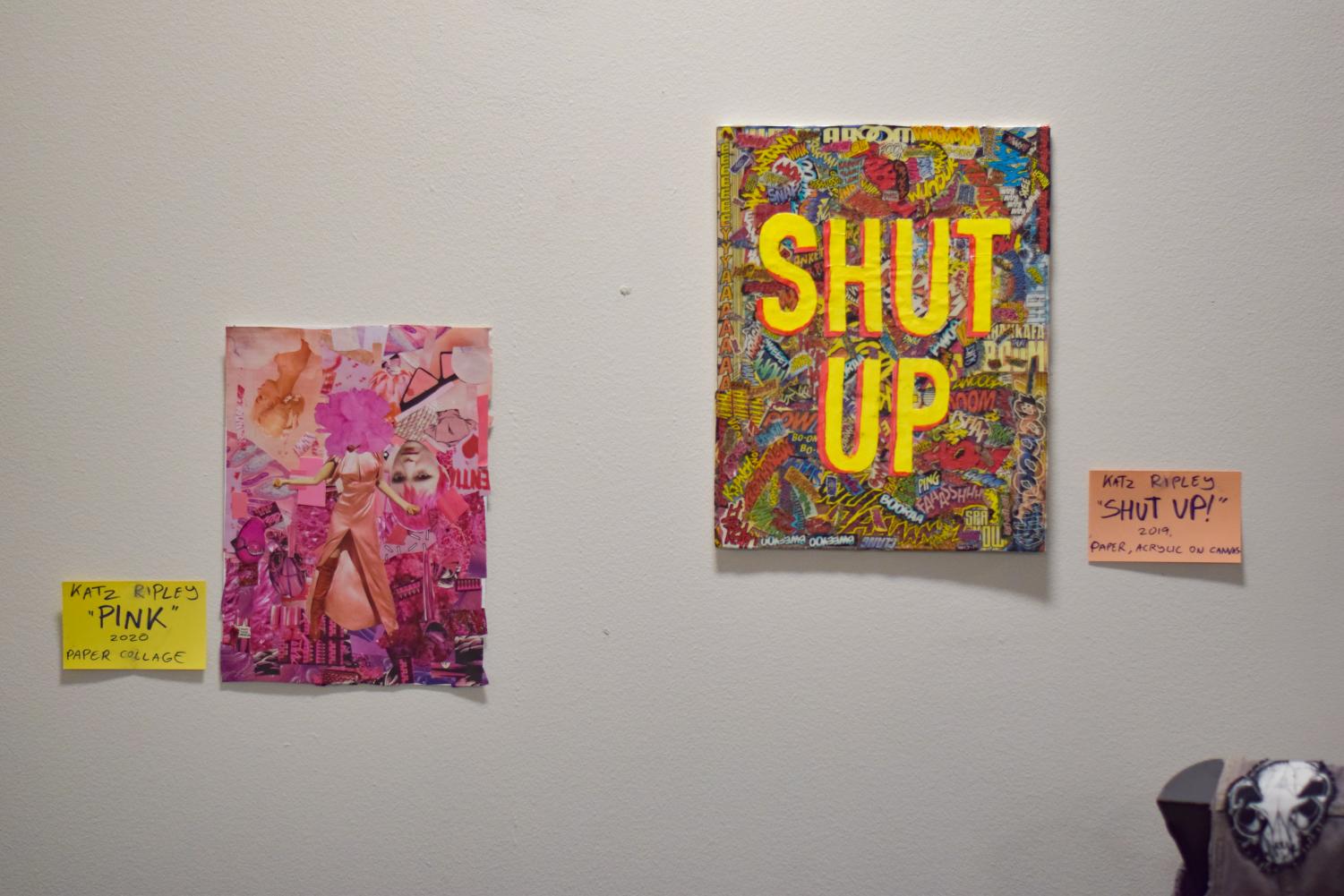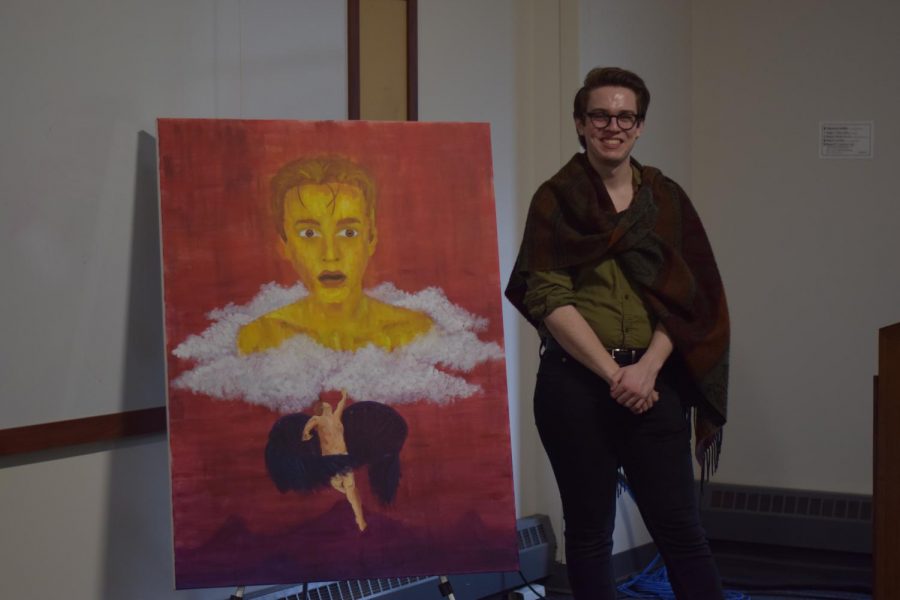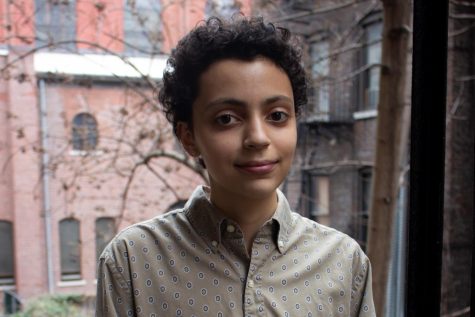“Q” the Spotlight on LGBTQ Artists
Rainbow Alliance hosts its first showcase for queer artists
OLIVE ZODA
Andrew Connelly created a painting based on the Daedalus and Icarus myth for the art show.
March 10, 2020
When walking into Fordham Lincoln Center’s Rainbow Alliance Art Show, “Q the Spotlight,” the sense of community was undeniable. Five artists, all a part of the club and the LGBTQ community, got a chance to showcase their art, which reflected themes of self-expression. Rainbow Alliance members and other attendees expressed their gratitude for the club’s ability to create safe spaces. Alexandra Prado, Fordham College at Lincoln Center (FCLC) ’21 and who uses all pronouns, expressed the essential need for safe spaces. “I’ve been a part of this club since first semester freshman year — it has been very important to me,” they said. “It has created a safe space for me.”
Rainbow Alliance’s E-Board brought a microphone, the presence of which incited a karaoke session. Wings, chips and mozzarella sticks were served, which gave viewers the opportunity to snack and browse the photography, visual art, jewelry and fashion.
Andrew Connelly, FCLC ’20, created a canvas painting based on the book “Fun Home” and the Icarus myth, in which he questions Daedalus’ perspective on losing his son. “Is Daedalus upset at the loss of his son or the failure of his invention?” Connelly asked. “I think from that I always read it as queer mythology.”
Connelly’s piece is a reflection on relationships — the duality of pleasing others and oneself. “As a gay man, your identity and attraction end up in this mirroring situation where love for another man can manifest in love with yourself,” Connelly said. “That is why I made this double self-portrait, because I have struggled in the past with self-image.”
Connelly, a theater major, tells stories on a daily basis. The art show gave him an opportunity to exercise his self-expression in a different way. “One of my goals moving forward as I graduate and move into the world is telling queer stories and creating a space to tell these stories,” he said.
Prado shared the same goal of telling queer stories in a way that is accessible and safe for queer artists. Their photography focuses on the freedom of expression of queer people. “The pieces I brought here focus on queer models and different expressions of people in their element,” Prado said.
Prado expressed the essential need for safe spaces. “I’ve been a part of this club since first semester freshman year — it has been very important to me,” they said. “It has created a safe space for me.”
Prado exhibited their need for safe spaces in their art as well. “I just really want to give people the opportunity to express themselves,” they said.
One artist, who asked to remain anonymous, expressed herself through the art of jewelry making. All of her pieces were handmade from objects she has found over the course of her life, or made by coloring on shrink wrap.
This artist has struggled with her identity, and art has given her a platform to navigate who she is. “I realized a lot of these pieces are hyper-feminine, and I haven’t really worn most of them at all since I got to college,” she said. “It was a part of this phase I was in where I was like, I’m going to be hyper-feminine and nobody will know that I am gay.”
This artist realized that her art served a purpose towards her growth and acceptance of herself. “It’s funny and cool, in a way, that my issues with internalized homophobia have been created into pretty things,” they said. Being a part of Rainbow Alliance has allowed them to be in an environment where they can move toward self-acceptance.

Vice President of Rainbow Alliance Ky Hayward, FCLC ’21, who also uses they/them pronouns, only had a brief moment to reflect on their art. Hayward and other club members are involved in and photograph for a photography project called The Collective. “What we do, essentially, is we create these big photoshoots where we ask artists from around the city to come,” they said. “We have a theme and we just provide a space where people can do creative things.”
The sentiments of The Collective are similar to that of Rainbow Alliance: creating and providing inclusive spaces for LGBTQ artists to express themselves and collaborate is vital to the community. Their photography exemplified their goal of community expression, depicting their LGBTQ friends in beautiful scenes full of color and emotion.
Rainbow Alliance Secretary Katz Fantulin, FCLC ’22, displayed art evocative of the punk aesthetic. Fantulin also uses the gender-neutral pronoun. Among their pieces were a self-designed denim vest, two collages, and a painting of punk and grunge figure Courtney Love. Fantulin described the vest covered in band patches, safety pins and painted designs as “a crash course in who I am if you take the time to read it. Just like, here are interests, here is imagery that I like.”
Their collages were equally chaotic and energized, a product of Fantulin’s creativity. “I see things that fit together visually more than conceptually, and that’s how I tend to put together collages,” they explained.
Fantulin painted Courtney Love because she is a major inspiration, both in general self-expression and with their decision to learn guitar. Fantulin observed that the guitar can feel inaccessible to people who aren’t men. “A lot of times it’s referred to as a ‘she.’ It’s seen as something that a man owns, a man plays,” they said, reflecting on the significance of inspirations which break gender roles.
Though Fantulin’s art may not have overt LGBTQ themes, they explained, “Being a lesbian is so integral to who I am and the content I consume, and that influences me and then is spit out into my art. So even if it’s indirect, I do think my art is lesbian art,” fitting in with the queer art space around them.














